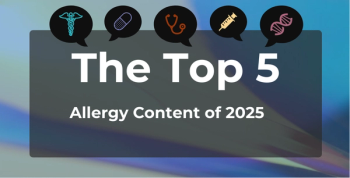
New CDC Report Provides Update on Incidence Rates of Pediatric ALL
New results published in CDC’s Morbidity and Mortality Weekly Report have identified a surge in pediatric acute lymphoblastic leukemia (ALL) during the period 2001 to 2008, followed by stabilization during 2008 to 2014.
New results published in CDC’s Morbidity and Mortality Weekly Report have identified a surge in pediatric acute lymphoblastic leukemia (ALL) during the period 2001 to 2008, followed by stabilization during 2008 to 2014. The Hispanic population had a higher rate of incidence of pediatric ALL during 2001 to 2008.
For this study, CDC used the United States Cancer Statistics data set, which covers 98% of the US population, unlike previous studies that used data gathered from about 28% of the US population. The data set used for analysis includes incidence data on approximately 15,000 new cases per year of all types of invasive cancer among children and adolescents up to age 20 years (for the period 2001 to 2014).
Overall incidence of pediatric ALL during the 15-year period, the analysis found, was 34 cases per 1 million persons—the highest incidence when comparing diverse racial/ethnic groups was observed in the Hispanic population (42.9 per 1 million persons), followed by non-Hispanic whites (34.2 per 1 million). The overall number of cases between 2001 and 2014 were 38,136. Interestingly, pediatric ALL rates were highest, overall and among the Hispanic population, between 2001 to 2008 and then stabilized over the following study period until 2014.
Geographically, the highest incidence of pediatric ALL was noted in Vermont (41.9 per 1 million), California (40.8 per 1 million), and New Mexico (39.1 per 1 million). With respect to gender, the incidence was higher among males (38.0 per 1 million) than in females (29.7 per 1 million); also, children between 1 and 4 years of age had the highest rate of pediatric ALL (75.2 per 1 million).
Economic status, the authors found, had a significant bearing on disease incidence as well: pediatric ALL incidence rates in the 25% of US counties with the highest economic status were higher than rates in the 25% of counties with the lowest economic status; additionally, metropolitan areas with a population of at least 1 million persons had a higher incidence of this disease than nonmetropolitan areas.
The authors recommend using this information to inform public health interventions that are relevant to the incidence and treatment of pediatric ALL, namely:
- Exposure to recognized risk factors for leukemia
- Treatment, including clinical trial enrollment
- Survivorship care planning
- Understanding factors that affect incidence of pediatric cancer
Their study, along with state-based demographic cancer data, can be useful for local and national cancer control programs to assess needs, allocate resources, and develop policy and public health strategies to reduce the risk of pediatric ALL and improve care for children diagnosed with this disease, the authors write.
Additionally, such information can be useful for public health planners to prioritize issues relevant to pediatric cancer survivors, such as care transition and educational resources, as well as inform research questions asked by healthcare professors and other researchers, they conclude.
Reference
Siegel DA, Henley SJ, Li J, Pollack LA, Van Dyne EA, White A. Rates and trends of pediatric acute lymphoblastic leukemia—United States, 2001—2014. MMWR Morb Mortal Wkly Rep. 2017;66(36):950-954. doi: 10.15585/mmwr.mm6636a3.
Newsletter
Stay ahead of policy, cost, and value—subscribe to AJMC for expert insights at the intersection of clinical care and health economics.







































